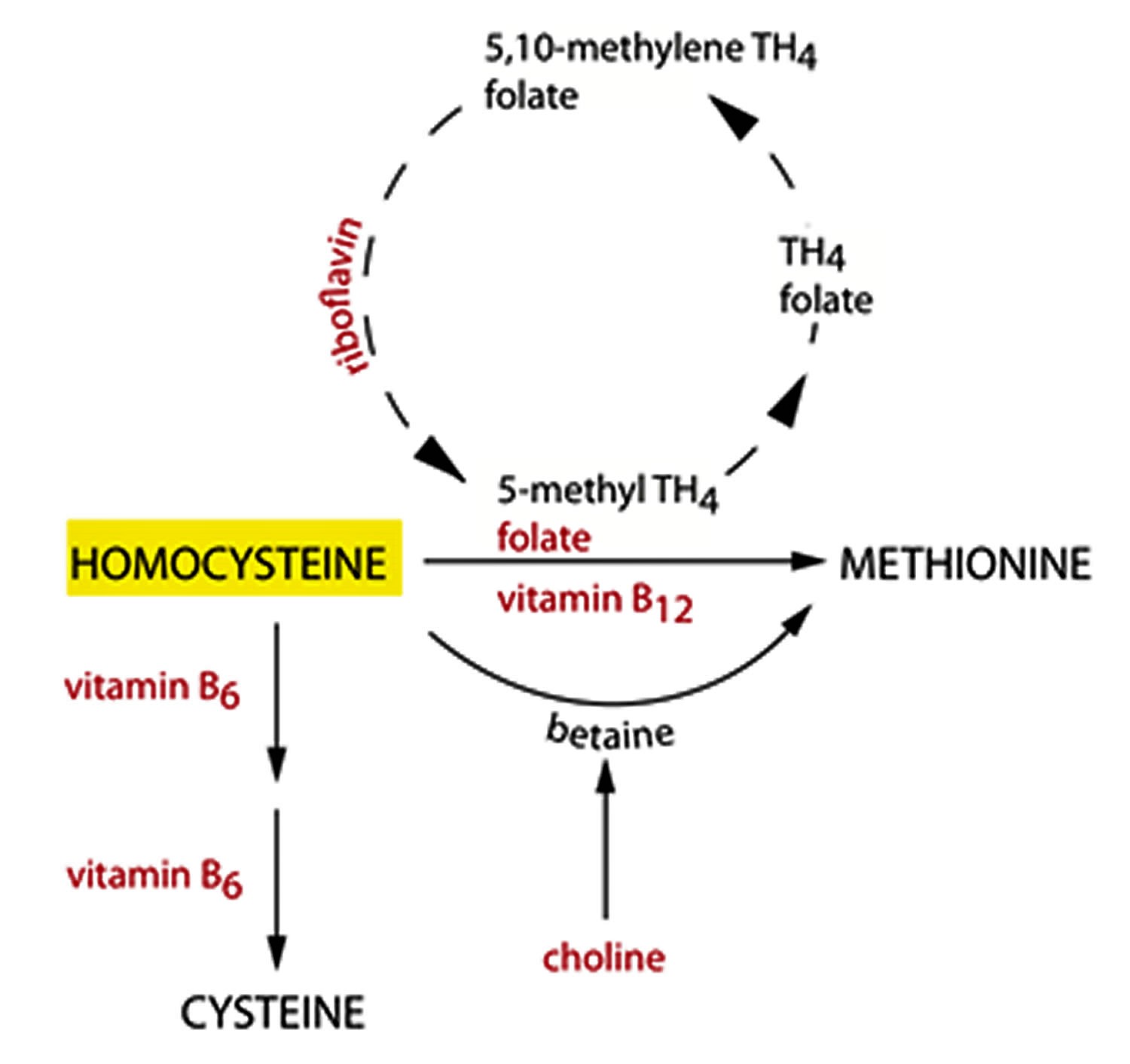*Geek Box: The Methylation Cycle
It’s important for the context of this study, and anything related to homocysteine, to understand the methylation cycle. A methyl group is one carbon atom [C] bonded with 3 hydrogen atoms [H3], so collectively this is written as CH3. Methylation is the process of adding a CH3 methyl group to another pre-existing molecule, and adding a methyl group to a molecule may either inhibit or initiate reactions. Thus, methylation is responsible for regulating genetic and epigenetic expression and repairing of DNA and RNA, along with neurotransmitter regulation and energy production.
The methyl donor responsible for transferring methyl groups to other molecules is known as S-adenosylmethionine [SAMe]. The cycle responsible for producing SAMe is also knows as the ‘methylation cycle’, and is where homocysteine is produced as a byproduct. You can see this cycle in the diagram below.

The cycle begins with 5-methyltetrahydrofolate [5-methylTH4], which is the active form of dietary folate – vitamin B9. This step requires the function of an enzyme, methyltetrahydrofolate reductase [MTHFR], through which folate enters the cycle. A series of methyl group donations result in a cycle ultimately producing homocysteine. As you can see from the red names of vitamins, B2 [riboflavin], B6 [pyridoxine], B9 [folate] and B12 [cobalamin] are all important cofactors in order to recycle this homocysteine back into the amino acids methionine and cysteine.
Of these co-factors, however, it appears that B9 and B12 are the most important, as the recycling of homocysteine into methionine is a fundamental step in the functioning of these cycles. There are two common genetic variants in the MTHFT enzyme, C677T and A1298C, result in the enzyme under-functioning and require supplemental folate for normal functioning of the methylation cycle, and lower homocysteine levels. This methylation cycle provides a mechanistic understanding for how inadequate levels of B-vitamins, folate and B12 in particular, may lead to elevated homocysteine levels.
